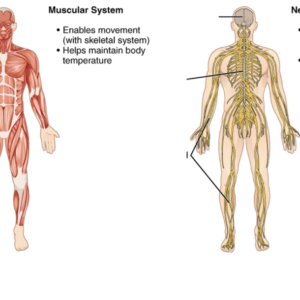When someone’s life hangs by a thread, every second becomes priceless.
Now imagine that person is your loved one — lying unconscious on a ventilator — and the doctors tell you they need to be shifted from Patna to Delhi immediately for advanced treatment. The clock starts ticking, and suddenly, what should be a simple journey turns into a race against time, paperwork, and uncertainty.
Moving a critically ill patient across states in India is not just about transportation. It’s about orchestrating a delicate medical operation on wheels — or in this case, on rails or in the sky. Behind every successful patient transfer lies a story of coordination, courage, and compassion that few outside the industry ever hear.
Why Inter-State Patient Transfers Are Rising
Over the last few years, India has witnessed a sharp rise in patients traveling to bigger cities for specialized medical care. Hospitals in Delhi, Mumbai, Chennai, and Hyderabad have world-class infrastructure, but patients from smaller towns often have limited access to such facilities.
Families now make tough decisions every day — to move their loved ones hundreds of kilometers in search of hope. Post-pandemic awareness, growing trust in advanced treatments, and the expansion of medical connectivity have all contributed to this trend.
But what seems like a straightforward decision — “let’s take him to Delhi” — is, in reality, an enormous undertaking that requires precise coordination, specialized equipment, and round-the-clock monitoring.
The Ground Realities: What Really Happens Behind the Scenes
-
The Logistical Maze
The first hurdle is logistics. Coordinating an inter-state transfer means aligning multiple systems — hospital authorities, ambulance services, railway or aviation departments, and the patient’s family.
In a train ambulance transfer, tickets must be confirmed, medical coaches must be equipped, and medical teams need to be ready at both departure and destination points. Timing becomes everything. A delay of even 30 minutes can mean the difference between stability and emergency deterioration.
-
The Medical Challenge
Every patient is different — some are on ventilator support, others require continuous medication or cardiac monitoring. Inside the ambulance, the setup must mirror an ICU. Portable ventilators, multi-parameter monitors, infusion pumps, oxygen cylinders — everything must function flawlessly even when the vehicle is in motion.
If the patient’s condition worsens mid-journey, the onboard doctor and nurse must stabilize them instantly. There’s no scope for panic, only precision.
-
Administrative Barriers
Hospital discharge forms, transfer letters, consent paperwork, and inter-state permissions often take hours to prepare. In emergencies, families have to run between departments, trying to get signatures and clearances, while also dealing with emotional exhaustion.
-
Emotional Turmoil
And then there’s the human side.
A mother watching her child being moved into an ambulance, a father clinging to hope as the train departs — these are moments filled with both fear and faith. Families often spend the entire journey praying silently, waiting for updates from the onboard medical team.
The Backbone of Every Transfer: The Medical Team
Behind every successful patient transfer stands an invisible army of professionals — doctors, nurses, EMTs (Emergency Medical Technicians), and logistics coordinators.
Their job doesn’t end when the ambulance starts moving. They monitor vital signs continuously, adjust oxygen flow, administer medications, and maintain real-time communication with both hospitals. Their calm under pressure is often what keeps the patient alive.
These professionals work through sleepless nights, unpredictable weather, and logistical challenges — yet they rarely get recognized. They are the unsung heroes of India’s evolving medical emergency system.
Why Road Ambulances Aren’t Always Enough
For long-distance transfers — especially beyond 200–300 kilometers — road ambulances often fall short.
Traffic congestion, unpredictable road conditions, and extended travel time make it risky for critical patients. Continuous vibrations, limited oxygen storage, and lack of rest opportunities for medical staff can further complicate things.
That’s where train and air ambulances come into play — offering safer, faster, and more stable environments for inter-state medical travel.
How Train and Air Ambulances Solve These Problems
A train ambulance service in Patna is essentially a moving ICU on rails. A reserved compartment is transformed into a full-fledged intensive care unit, equipped with ventilators, monitors, oxygen support, emergency drugs, and trained staff.
Advantages:
- Stable environment (no road bumps or turbulence)
- Cost-effective compared to air ambulances
- Ideal for patients who need care but not extreme urgency
On the other hand, air ambulances are used for extremely critical patients or time-sensitive emergencies. They minimize travel time drastically — what would take 20 hours by train can be completed in just 2–3 hours by air.
Both modes of transport share one goal: to provide uninterrupted care during the journey. In many cases, this continuous monitoring becomes the bridge between life and loss.
ALSO READ: How AI and Tech Are Changing Recruitment Agencies in India
The Human Side: What Families Go Through
While medical teams focus on vitals and procedures, families face a different kind of battle — emotional and financial.
They’re dealing with uncertainty, anxiety, and hope, all at once.
One father once said during a transfer from Patna to Delhi, “I don’t know what will happen when we reach, but at least we’re doing something. Staying still was not an option.”
This sentiment captures what most families feel — they cling to action as a form of hope. And for many, seeing the professionalism of the medical team during the journey brings a sense of comfort, even amidst chaos.
How Save Life Care Makes These Transfers Possible
At Save Life Care, we’ve handled hundreds of inter-state patient transfers — by train, air, and road — across India.
Our team understands that moving a patient isn’t just about logistics; it’s about empathy, coordination, and timing.
We provide:
- Fully equipped ICU train and air ambulances
- Experienced doctors, nurses, and EMTs onboard
- End-to-end coordination with hospitals and authorities
- 24/7 support so families can focus on their loved ones, not paperwork
- Affordable pricing without compromising safety or quality
Every transfer we handle is a mission to save a life — and behind each success is a team that refuses to give up, no matter how challenging the journey.
If you ever need to transfer a critical patient across states, call Save Life Care at +91-8083309381 or visit www.savelifecare.com
Why Choose Save Life Care?
When it comes to transferring a critically ill patient across states, choosing the right medical transport provider can make all the difference. At Save Life Care, we don’t just move patients — we move them with care, precision, and compassion.
Here’s why families across India trust us:
End-to-End Coordination:
From arranging hospital clearances to securing train or air bookings, our team handles every logistical detail seamlessly.
ICU-Equipped Ambulances:
Every train and air ambulance is fitted with advanced ICU setups — ventilators, oxygen support, cardiac monitors, and emergency medicines — ensuring hospital-level care during transit.
Expert Medical Team:
Each transfer is accompanied by certified doctors, nurses, and EMTs trained to handle critical patients and emergencies in motion.
24×7 Availability:
Emergencies don’t follow office hours — and neither do we. Our coordinators and medical teams are available round the clock.
Affordable & Transparent Pricing:
We believe life-saving care shouldn’t be limited by cost. Our train ambulance services are among the most affordable in India, with complete transparency and no hidden fees.
Pan-India Coverage:
Whether it’s Patna to Delhi, Ranchi to Mumbai, or Guwahati to Chennai — we operate across India, connecting patients to the best hospitals efficiently and safely.
Conclusion: Every Journey Is a Story of Hope
Moving a critical patient from one state to another isn’t just a medical process — it’s a story of resilience, teamwork, and human spirit.
From the doctor who stays awake through the night to the mother who refuses to lose hope, each person plays a part in turning fear into faith.
As India’s emergency medical infrastructure continues to evolve, one thing remains unchanged — the power of compassion. Because in the end, saving a life isn’t just about reaching a destination; it’s about the journey itself.




